Schneider Electric Bundle
Who Really Owns Schneider Electric?
Ever wondered who steers the ship at a global industrial giant like Schneider Electric? Understanding the Schneider Electric SWOT Analysis is just the beginning; the company's ownership structure is a key factor in its strategic direction and market performance. From its roots in 1836 to its current status as a leader in digital automation and energy management, the evolution of Schneider Electric's ownership tells a compelling story.
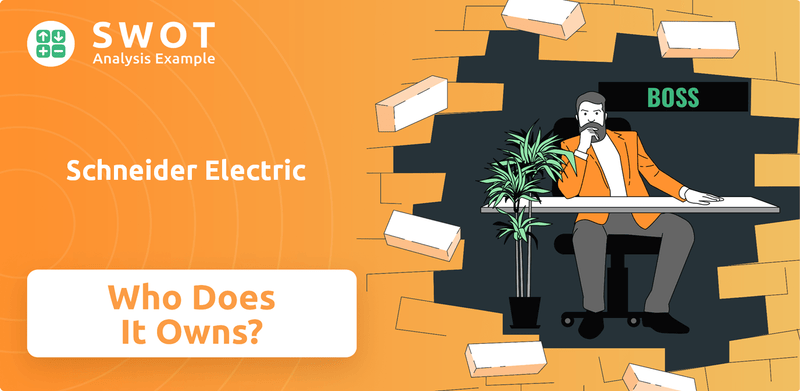
This exploration into Schneider Electric ownership reveals more than just names; it uncovers the forces shaping its future. Knowing who owns Schneider Electric helps investors and analysts understand the company's long-term vision, its commitment to sustainability, and its response to market dynamics. Delving into the Schneider Electric company profile and Schneider Electric history provides valuable insights into its governance and strategic planning. Examining the Schneider Electric ownership structure offers a comprehensive understanding of this industrial technology leader.
Who Founded Schneider Electric?
The story of Schneider Electric begins in 1836, with brothers Adolphe and Eugène Schneider at the helm. They acquired the Creusot foundries in France, marking the official start of what would become a global industrial giant. This acquisition laid the groundwork for the company's future, setting the stage for its evolution into the prominent entity it is today. Understanding the initial ownership is key to grasping the company's foundational values and strategic direction.
Adolphe, with his background in banking, and Eugène, an engineer, brought a unique blend of skills to their venture. Their partnership was built on a shared vision to transform the foundries into a major industrial enterprise. While specific equity splits from that era are not readily available, their joint acquisition signifies a shared and equal foundational ownership, reflecting a unified commitment to their business.
Early on, the ownership of the company was primarily within the Schneider family. This structure was typical for industrial enterprises of that time. The focus was on reinvesting profits back into the business to fuel expansion, rather than seeking external investors. This allowed for long-term strategic decisions and significant capital investments without immediate external pressures. The company's history is closely tied to the Schneider family's vision and their dedication to expanding its manufacturing capabilities.
The early ownership of Schneider Electric, then known as Schneider & Cie, was firmly rooted in the Schneider family, with Adolphe and Eugène Schneider as the primary founders. The company's early focus was on the iron and steel industry, heavy machinery, shipbuilding, and armaments. This foundational ownership structure allowed the company to make long-term strategic decisions. To learn more about the company's strategic direction, consider reading about the Growth Strategy of Schneider Electric.
- Founders: Adolphe and Eugène Schneider.
- Initial Focus: Iron and steel, heavy machinery, shipbuilding, and armaments.
- Ownership Structure: Primarily family-owned in the early years.
- Early Strategy: Reinvestment of profits for expansion.
Schneider Electric SWOT Analysis
- Complete SWOT Breakdown
- Fully Customizable
- Editable in Excel & Word
- Professional Formatting
- Investor-Ready Format
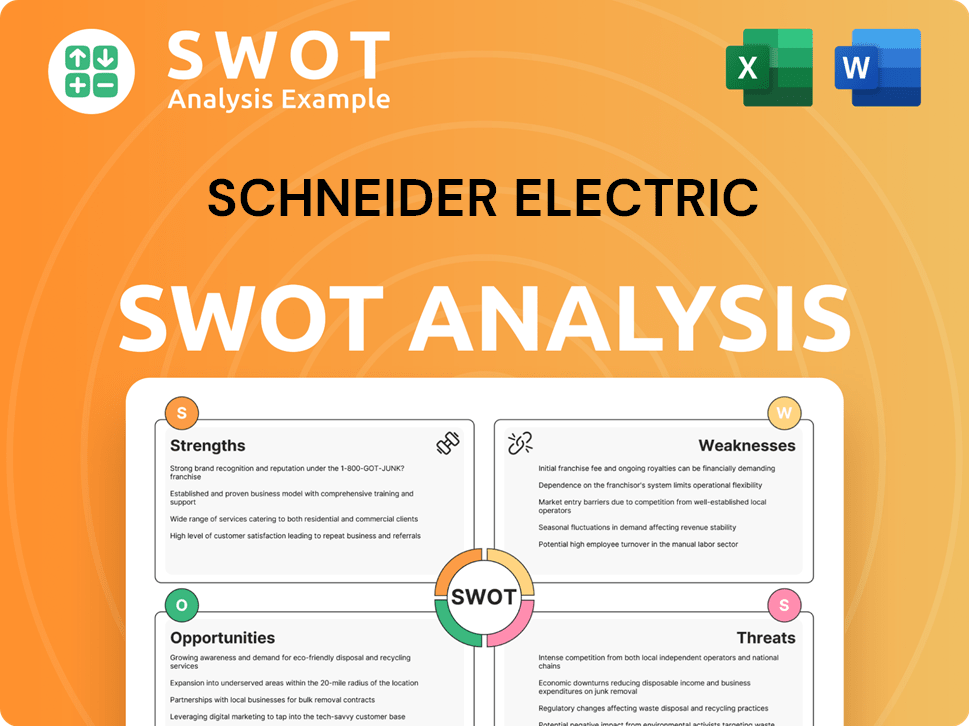
How Has Schneider Electric’s Ownership Changed Over Time?
The ownership of Schneider Electric has seen considerable changes since its inception in 1836. Initially, it was a family-run industrial enterprise. A major shift occurred after World War II when the company moved away from heavy industry to focus on electricity, electronics, and control systems. This strategic move was crucial for its modern development. Later, the company became publicly listed, with its shares traded on Euronext Paris. This transition to a public entity meant that direct family ownership decreased, and a wider range of shareholders became involved.
Today, the ownership of Schneider Electric is mainly spread among institutional investors, mutual funds, index funds, and individual shareholders. The company's evolution from a family-owned business to a publicly traded entity reflects its growth and adaptation to the global market. The shift to institutional ownership has also influenced the company's strategy, increasing the focus on shareholder value, sustainability, and strong corporate governance.
| Historical Event | Impact on Ownership | Year |
|---|---|---|
| Founding of the company | Family ownership | 1836 |
| Post-World War II diversification | Transition from heavy industry to electrical and electronic systems | Post-1945 |
| Initial Public Offering (IPO) | Shift from family ownership to public shareholders | Historical data not readily available |
As of early 2025, major institutional investors hold significant stakes in Schneider Electric. For instance, BlackRock, Inc. and The Vanguard Group are consistently among the largest institutional shareholders. As of December 31, 2024, BlackRock, Inc. held approximately 6.0% of Schneider Electric's shares, while The Vanguard Group held around 3.5%. Other significant institutional investors include Amundi Asset Management and Norges Bank Investment Management, each holding over 1% of the shares. These institutional holdings reflect a belief in Schneider Electric's long-term growth prospects in energy management and industrial automation. For a deeper understanding of the company's target market, you can read more about it here: Target Market of Schneider Electric.
Schneider Electric's ownership has evolved significantly, from family-owned to a publicly traded company.
- Institutional investors like BlackRock and Vanguard are major shareholders.
- The shift to public ownership has increased focus on shareholder value.
- The company's history shows a strategic pivot towards energy management and automation.
- Understanding the ownership structure is key to assessing the company's direction.
Schneider Electric PESTLE Analysis
- Covers All 6 PESTLE Categories
- No Research Needed – Save Hours of Work
- Built by Experts, Trusted by Consultants
- Instant Download, Ready to Use
- 100% Editable, Fully Customizable
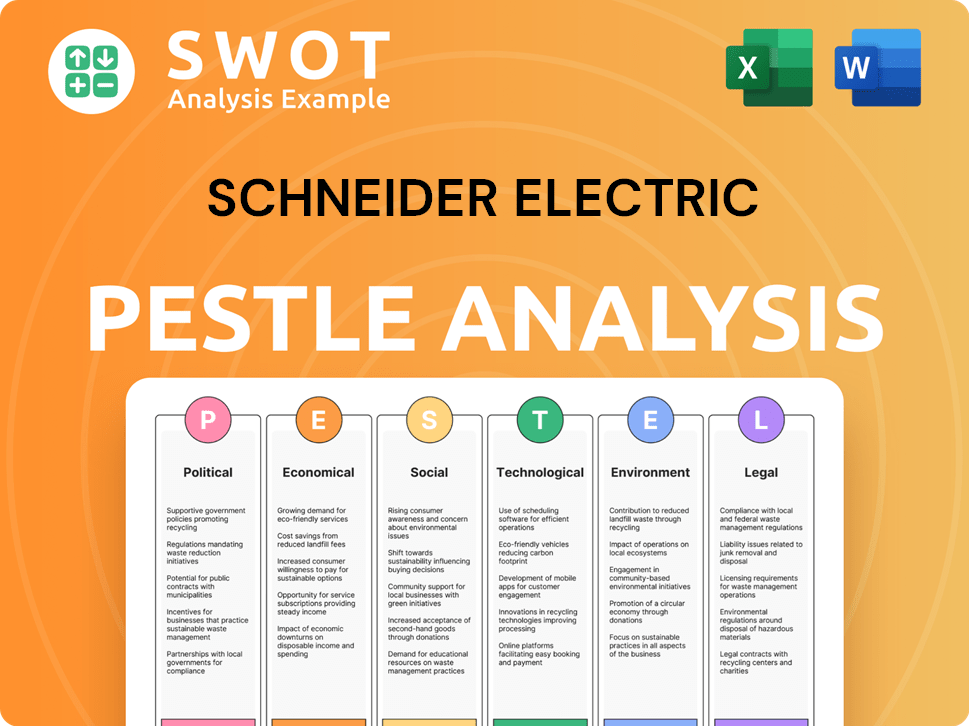
Who Sits on Schneider Electric’s Board?
The current Board of Directors of Schneider Electric is pivotal in the company's governance, representing major shareholders and ensuring independent oversight. As of early 2025, the Board includes executive directors, non-executive directors representing significant shareholders, and independent directors. Jean-Pascal Tricoire serves as Chairman, and Peter Herweck is the Chief Executive Officer and a director. While specific board members directly 'representing' major shareholders like BlackRock or Vanguard are not typically appointed, the interests of these large institutional investors are often aligned with strong corporate governance and long-term value creation, which independent directors are tasked with upholding.
The composition of the Board, with a strong emphasis on independent directors, aims to balance the interests of all shareholders and ensure robust oversight of management. The company's governance is regularly scrutinized by institutional investors and proxy advisory firms, ensuring accountability and adherence to best practices in corporate governance. For detailed information about the company's competitors, you can refer to Competitors Landscape of Schneider Electric.
Schneider Electric operates under a one-share-one-vote structure, a common practice for publicly traded companies in France. This means that each share of common stock generally carries one vote, ensuring that voting power is directly proportional to the number of shares held. There are no publicly disclosed special voting rights, golden shares, or founder shares that would grant outsized control to any single individual or entity beyond their proportional shareholding. This structure promotes a more equitable distribution of voting power among shareholders.
Understanding the Board of Directors and voting structure is essential for investors. The company's governance emphasizes independent oversight and a fair distribution of voting power.
- The Board includes a mix of executive, non-executive, and independent directors.
- Schneider Electric operates under a one-share-one-vote system.
- Institutional investors play a significant role in corporate governance.
- The Board aims to balance the interests of all shareholders.
Schneider Electric Business Model Canvas
- Complete 9-Block Business Model Canvas
- Effortlessly Communicate Your Business Strategy
- Investor-Ready BMC Format
- 100% Editable and Customizable
- Clear and Structured Layout
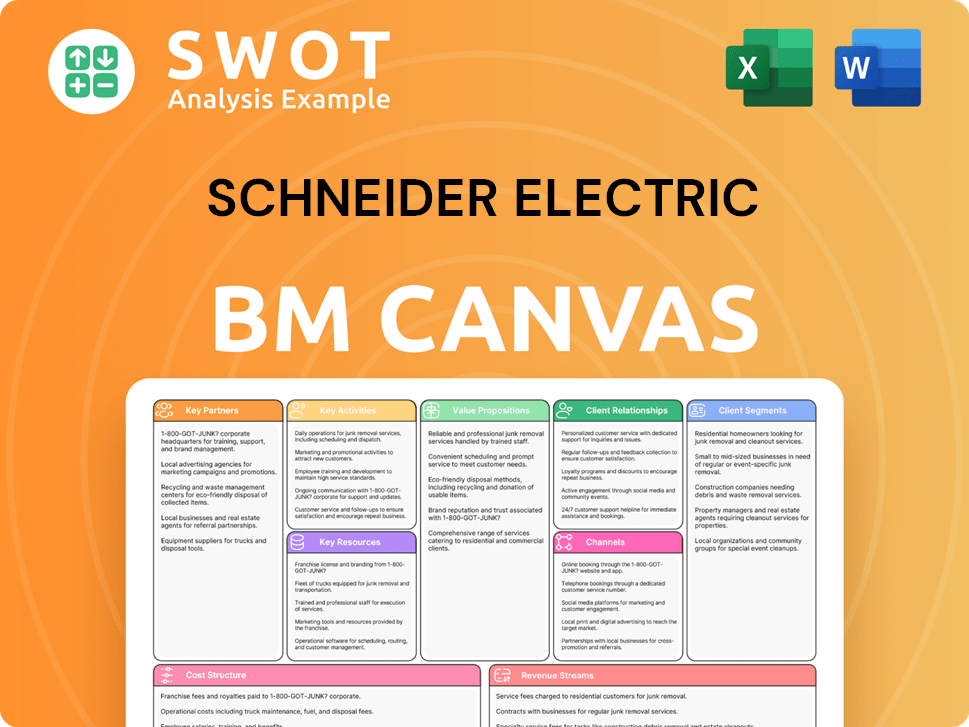
What Recent Changes Have Shaped Schneider Electric’s Ownership Landscape?
Over the past few years (2022-2025), the ownership of Schneider Electric has remained largely stable, with a continued strong presence of institutional investors. This reflects the company's solid position in the energy management and industrial automation sectors. While there haven't been major shifts in the ownership structure, like significant share buybacks, the company has focused on strategic acquisitions to bolster its market position. For example, the full acquisition of AVEVA Group Plc in January 2023, expanded its industrial software capabilities.
The ownership structure of large multinational corporations, such as Schneider Electric, often sees an increasing concentration among institutional investors. This is driven by the growth of passive investment funds and large asset managers. Schneider Electric's ownership has been broadly dispersed for decades, and there are no immediate plans for privatization or major leadership changes that would significantly impact ownership. The company continues to emphasize sustainable growth and shareholder value, attracting a diverse base of investors. This focus aligns with current investment trends in the energy transition and industrial digitalization.
Institutional investors maintain a strong presence in Schneider Electric's ownership. The company's strategic acquisitions, like AVEVA Group Plc, expand its market capabilities. Schneider Electric's focus on sustainable growth attracts and retains investors.
Schneider Electric's ownership structure has remained relatively stable. The company's commitment to shareholder value is consistently highlighted. The focus is on leveraging its position in energy transition and industrial digitalization.
Schneider Electric Porter's Five Forces Analysis
- Covers All 5 Competitive Forces in Detail
- Structured for Consultants, Students, and Founders
- 100% Editable in Microsoft Word & Excel
- Instant Digital Download – Use Immediately
- Compatible with Mac & PC – Fully Unlocked
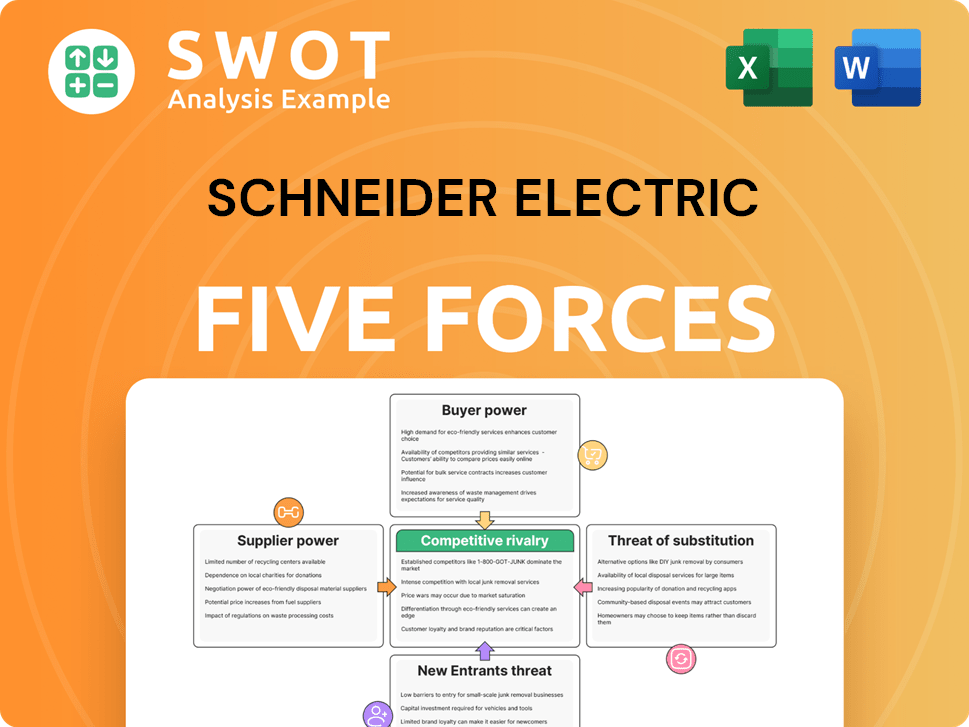
Related Blogs
- What are Mission Vision & Core Values of Schneider Electric Company?
- What is Competitive Landscape of Schneider Electric Company?
- What is Growth Strategy and Future Prospects of Schneider Electric Company?
- How Does Schneider Electric Company Work?
- What is Sales and Marketing Strategy of Schneider Electric Company?
- What is Brief History of Schneider Electric Company?
- What is Customer Demographics and Target Market of Schneider Electric Company?
Disclaimer
All information, articles, and product details provided on this website are for general informational and educational purposes only. We do not claim any ownership over, nor do we intend to infringe upon, any trademarks, copyrights, logos, brand names, or other intellectual property mentioned or depicted on this site. Such intellectual property remains the property of its respective owners, and any references here are made solely for identification or informational purposes, without implying any affiliation, endorsement, or partnership.
We make no representations or warranties, express or implied, regarding the accuracy, completeness, or suitability of any content or products presented. Nothing on this website should be construed as legal, tax, investment, financial, medical, or other professional advice. In addition, no part of this site—including articles or product references—constitutes a solicitation, recommendation, endorsement, advertisement, or offer to buy or sell any securities, franchises, or other financial instruments, particularly in jurisdictions where such activity would be unlawful.
All content is of a general nature and may not address the specific circumstances of any individual or entity. It is not a substitute for professional advice or services. Any actions you take based on the information provided here are strictly at your own risk. You accept full responsibility for any decisions or outcomes arising from your use of this website and agree to release us from any liability in connection with your use of, or reliance upon, the content or products found herein.